|
9th July 2019. Tuesday is here and so is gaming night at 'The Sovereign' in Woking. Elder Sign is a co-operative game where the players take on the role of intrepid investigators, driven to uncover the conspiracies that will bring about the end of the world without descending into mind-shattering insanity. What's in a game? Elder Sign is a push your luck game with some dice and a lot of cards.
Investigators Investigator's have 2 stats, health and sanity. You don't need me to tell you what happens if either reaches 0. Investigator's also have a unique special ability each and some starting equipment. Ancient one The ancient one card contains some pertinent information. There's a timing track that shows how close the ancient is to appearing. There's also information on what happens if the ancient one appears and how to fight it. There's a 'elder sign' track. If the players accumulate enough elder signs, they can prevent the ancient one even appearing. Location cards Location cards contain multiple tasks. These take the form of rows of symbols (That match the symbols on the dice). Each location card lists 'rewards & penalties'. One of the location cards is the 'museum entrance'. Characters can be placed on this location card to rest & recuperate. How's it play?
Before playing, a little setting up needs to be done.
The basic premise of the game is that the investigators complete the tasks on the location cards and to earn resources and elder signs. These can be used to win the game. But in the meanwhile, the clock is ticking... When a player has their turn; they move their marker to a location card and try to complete one of the tasks on the card. Each task will contain a number of symbols. The active player rolls the dice, any of the dice results that match the symbols for the current task are placed on to that task on the card. If all of the symbols are matched by dice results, then that task is completed. If the task is not completed, the player has the choice to fail the task or continue rolling. If the player chooses to continue rolling, they take the remaining unmatched dice -and discards one- and rolls them again. Thus repeatedly reattempting a task will eventually deplete a player's dice. If a player is ever in a situation where they do not have enough dice to complete a task, then they fail that task. When a task is failed, voluntarily or otherwise. Then the active player suffers the penalties listed on the location card. If a task is failed and a 'terror' result has come up on the dice, then the active player suffers an additional penalty. When a task is completed, all the dice are returned to the active player. If another task is available on the location card, then the active player may attempt to complete it. If all of the tasks on a location card have been completed, then that location has been completed! The active player takes the listed reward and returns to the entrance. When a player completes their turn, the clock advances. When the time reaches a certain point, it will cause the ancient evil to be spawned. There are more rules: There are rules for suffering terror. Rules for monster appearing. Rules for using weapons, equipment and spells. Rules for going into otherworldy locations. Rules for clues. Rules for environmental effects that affect the game and so on. Endgame If the players accumulate enough elder signs, they win the game. If the ancient one appears, then the players must battle it. This involves rolling dice much like completing tasks. If the players succeed, then the ancient one is vanquished. If they fail to defeat the ancient one, then the players all fail and it's curtains for the earth! Overall Elder Sign is a push your luck game. I played for the first time a few years ago with 2 other players and found it a hugely frustrating experience. However, when I played it recently with 5 other players, it was a lot less frustrating. I guess watching other players getting luck as bad as mine is cathartic! As a co-operative game about struggle against cosmic horror, Elder Sign is an OK game. It handles its theme well enough as you investigate the museum looking for ways to impending doom against the clock. But I have small issue with the push your luck mechanic of Elder Sign. With a push your luck game, you need a reason to 'settle' and a reason to... well 'push your luck'. The priorities of these reasons may shift according to the situation, but they need to always be there. But when playing Elder Sign, sometimes it feels like that it's pointless to settle. Player's will suffer the same penalty, regardless of whether you choose to fail or are forced to fail. You only risk suffering terror if you push your luck - and that's not guaranteed. So it feels like there's little reason to not push your luck. It's a small criticism, I know. So would I play Elder Sign again? Going by past experience, I feel the game gets better with more play (Although that's true of the majority of games IMHO.) and Elder sign goes up to 8 players! So with 4+ players, I would try it again.
0 Comments
6th July 2019. It's a Saturday afternoon at 'The Sovereigns' and finally after a short delay: Session 11 of 50 Fathoms commences. Location: Coaker Island. We landed back on Coaker island at night and barely manage to avoid a patrol. We begin our climb stealthily. During our ascent we spot a patrol of 5 Kieran soldiers who do not notice us. Quietly we follow until we have the opportunity to stealthily attack. Win stuns them with a spell and we knock them out and tie them up. Searching through their kit we pilfer 80 pieces 'o eight and some 'thick jackets' that are appropriate for the hostile climate we will soon encounter. Whilst searching through the kit, Win hears a noise behind us. Whilrling round and using on the guards' light sources, Win examines the trussed up guards but sees nothing. However, Win states that. 'she can 'sense' something in the air, in the darkness.'... We press onward and upwards and soon it starts to become dawn.
Ahead we spot a hut. Baxter sneaks up to the hut peers He spies more guards, they seem older and more relaxed than those we encountered earlier. Baxter has spotted 3 guards in total. Because of the thick jackets we acquired, we can pass as guards. So we decide to enter the hut in the guise of other guards. The guards in the hut are not too suspicious. But even so, they summon someone else into the room. Someone called 'Alan'. To be continued... 6th July 2019. It's a Saturday lunchtime at 'The Sovereigns' in Woking, so this means it's time for some 50 Fath... wait someone's running late! What will we do? It turns out that we'll 'do' 'Noctiluca'. I'm not entirely certain what the theme of Noctiluca is: Wikipedia states that noctiluca is 'a free-living, marine-dwelling species of dinoflagellate that exhibits bioluminescence when disturbed'. So now you know, it's theme is 'collecting noctiluca'. Despite appearances; Noctiluca is not a dice game. It's actually a set collecting game. What's in a game? There's a lot of very pretty colour and artwork in the components - particularly the cards. Noctiluca has the following components:
How's it play?
First there's set up.
The purpose of the Noctiluca is to collect coloured dice that match the squares on the cards. When all the squares on a card are filled with dice, that card is 'banked' and a scoring token of the relevant colour is collected by the player. The player then picks a replacement card from the top of one of the 4 face-up stacks. How are dice collected? I'm glad you asked, because this is where things get interesting.
Endgame There are 4 ways to score points in Noctiluca.
Overall Even though the rules are simple, players are given lots of options and decisions to make, particularly at the start of a phase when they are so many dice on the board. In fact at the there's almost too many choices that can be made! Noctiluca is a colourful, easy to learn game that is fairly quick to play. With a unique mechanic and scoring rules, it a little different to anything I've played before. I'd happily play it again. 2nd July 2019. The second game of gaming night at 'The Sovereigns' was 'Isle of Skye'. In my imagination, one day someone was playing 'Carcassonne' and they thought. 'Y'know what this needs is more depth. Oh and it needs to be set in a remote part of Scotland!'. And the result of that thought was 'Isle of Skye'. In reality the link to Carcassonne is fairly superficial, both are landscape-based tile laying games and that's about it for similarities Isle of Skye also contains an intriguing trading mechanic. What's in a game?
How's it play?
First, there's the set up. The scoring tiles are shuffled and 4 of them are placed on the main game board. Each tile has a different method or way of scoring points. Each player is also given some currency (Which they keep hidden behind their screen at all times.). The game is played over 5 turns and the game is scored at the end of these 5 turns: In each turn different scoring tiles will used for scoring. In the 1st turn, one tile is used, in turns 2 & 3, two tiles are used and in turns 4 & 5 three tiles are used. Once set up is completed, the game begins. There are 3 phases to every turn. Income Each player draws currency from the gold supply. Trading The trading mechanics in Isle of Skye are like no other game I've played. Each turn, all the players will acquire some tiles and must sell them, but they use their own money to do so!
Playing tiles Once all of the tiles have been bought, players have to lay their tiles. The rules for laying tiles is pretty straightforward. Tiles can be placed down in any orientation, but must honour all the other tiles that it is adjacent to. Each player creates their own 'map' independent of all other players. Overall? I Liked Isle of Skye. I particularly like the mechanics for selling tiles. You given some intriguing and risky strategies to use. If you draw tiles you don't want, you can try to sell them at a low price to get rid of them. But underselling the tiles may help someone else with very little benefit to yourself. Conversely, putting a high price on tiles may them price them out of other peoples' ranges. Ending up with you paying a high cost for tiles you don't want. Additionally, because you use your own funds to put a price on tiles. If you price your tiles too highly, you will be left with little gold to buy other player's tiles. There's lots of potential decisions here and that's good. When laying tiles, there's lots of decisions to be made too. As well as the 3 land types, field, mountain and water, there are also features such roads, lighthouses, farms etc. All of these can be used in scoring, but they will do so differently over the rounds. So you need to prioritise how you lay tiles to maximise scoring. So like I said I like Isle of Skye and it's been added to 'the list'. 2nd July 2019.
Tuesday has arrived and gaming night with the 'Woking Gaming Club' at 'The Sovereigns' beckons. Whilst waiting for the later arrivals, a quick game of Just One was played. You can read my thoughts about it here. 29th June 2019
It's still the 29th of June, but day has given way to the onset of evening. This can only mean gaming night at Matakishi's. We fell back on a tried and tested classic - Machi Koro. You can read my thoughts about it here. 29th June 2019
Gaming afternoon continues at 'The Sovereigns' in Woking and we concluded with 'Tiny Epic Galaxies'. I've written about Tiny Epic Galaxies before here. 29th June 2019
It's a Saturday lunchtime at 'The Sovereigns'. We should be playing 50 Fathoms, but sometimes life interferes. So instead we are playing Princess Legend. Will the Prince find his Princess (Yay!), or will he get the Queen instead (Boo!)! Only you can find out in... Princess Legend. Princess Legend is a 'bluffing/social deduction/hidden' role card game. Everyone is given a role to play and the 'Prince player' tried to guess who is the Princess. What's in a game? Princess Legend is pretty light on components. A deck of 8 cards. They are actually coasters and not traditional playing cards in size. Each card has a colourful portrait on it. There 3 types of character on the 8 coaster.
A bunch of tokens to track scoring. And that's it! How's it play? Set up. The amount of coasters that are used in a game is equal to the number of players plus 1. Thus if you play with 4 players, the game would be played with 5 coasters. Princess Legend is played with a minimum of 3 players and 4 coasters. The Prince, the Princess, the Queen and the Maid are always used in all games. The other characters will be used dependant upon the number of players participating. Every player will play the role of the Prince. The Prince's role moves clockwise round the table in every round. Firstly, the Prince coaster is given to the player in the Prince role in this turn. The coaster is kept face-up as everyone knows who is the Prince. Secondly, the remaining coasters are shuffled and dealt face-down to the remaining players. One coaster is placed into the middle of the playing area is played by nobody. Once dealing has finished the Prince must close their eyes, then all the other players must reveal their roles (Now only the Prince does not know what everybody else's roles are.). Then all the players (With their eyes open.) are satisfied that they've seen everyone else's role, they turn their coasters back face-down again, the Prince can open their eyes once more. Now play can commence. Let's do this thing! The Prince's objective is to guess which player is the Princess (Or if it's the coaster in the middle). To do this, the Prince must ask the other players questions. However, the objectives of the other players will be different. Other players will want to get the Prince to pick a certain face-down coaster. Each player's objective is different according to their role.
However, there is a limit to the questions that can be asked. The Prince can ask each player only one question each (In any order.). When all players have answered a question, then the Prince has one final question that they can ask anyone. Not only is the Prince limited to the number of questions that they can ask. They are also limited in what the question can be. There are only 3 questions that can be asked. They are:
How the players answer this question is dependant on what role they have.
Once the Prince has made their guess on who is the Princess, all the other players reveal their roles. Then we see who has scored a point in this round.
Endgame. Play progress until each player has played the Prince 1, 2 or 3 times (Depending on number of players). Then points are tallied. Highest score wins. Overall? Generally, I dislike bluffing/hidden role games. But this is one of the better ones I've played. I like how your put into random, shifting teams each round and then trying to work with your temporary colleagues. Princess Legend also seems to differ to many other hidden role games: In most hidden role games, your role is hidden from all other players. But in Princess Legend, your role is only hidden from the Prince. I think that this makes the game a little less intense, a player only has to deal with questions from one other player and even then, there's a maximum of 2 questions to answer. And those answered are never really challenged, because the Prince play must use logic and reasoning to try and figure their choice. When a player lies to the Prince, figuring out it's a lie will provide information in itself. So I think Princess Legend is a 'tolerable' hidden role game - which for me means it's quite good - for that sort of game. 28th June 2019
The weekend beckons and Friday is upon us. Friday means that the erratic WFRP The Enemy Within continues. Our intrepid adventurers have arrived at Aldorf, the imperial capital. Their entry into the city was greeted with an explosion at the Temple of Sigmar in the last session! Our adventurers are recruited into an investigation in a conspiracy at the highest levels in the city, intertwined with an investigation into the explosion. The party learns that the Grand Theonogist has been killed in the explosion. Their initial searching reveals that a large number of barrels of gunpowder were hidden in one of the basements in the temple. 25th June 2019. Gaming night at 'The Sovereigns' continues. The final game of the night is Evolution: Climate. Have you ever yearned to evolve over millions of years and wander the plains of the Mesozoic era? Do you like dinosaurs (And who doesn't?)? Then maybe Evolution: Climate is for. Evolution: Climate is one in a series of 'Evolution' games about evolving dinosaurs. I've only played this one and they appear to share similar mechanics and concepts, but have differing themes. As the name implies, this game is about climate and adds extra rules for temperature. What's in a game? Evolution: Climate has both a main game board and smaller personal 'species' game boards for all players. The main game board is used to track the climate and food supplies. The personal board is used to track the evolutionary development of your dinosaur species. You can have more than one species during a game and therefore can have more boards. There is a deck of 'trait' cards. Some food markers. Finally, there are some little bags given out to all players. Each bag has a unique dinosaur picture on it, which is a nice touch. How's it play?
Each player is given a species board and a bag. Deal cards. In the first phase, trait cards are dealt to each player, the more species they control, the more cards they get. Determine plant food & climate. In the next phase; play begins with everybody playing trait card face-down on to the main game board. Once this is done, all the cards are turned over. This determines 2 things.
Play trait cards. Players place face-down trait cards next to their species boards. When all players have done, these are turned over. Trait cards represent the different evolutions that your species' will go through. Thus your species' may gain a 'hard shell' or gain the ability to climb. All of these traits give a species special abilities or possibly bonuses to their 'stats'. species can only have 4 different trait cards at any time, but trait cards can be replaced by other trait cards. Players may also discard trait cards to improve their species' 'stats' on their species' boards. Talking of which... The species board has 3 pertinent stats.
Finally, a trait card can be discarded to gain a new species board (And thus begin a new species.). Feeding. This is the final phase of a turn. At the start of this phase all species are hungry and must feed, one at a time. All animals are either herbivore or carnivore.
After feeding has been completed, all players take the food tokens that they have acquired during the round from their species' boards and places the tokens into their spiffy little individual bags. Then the next turn begins with dealing out cards again. Endgame When there are no more trait cards to deal out, the endgame is triggered. Play continues for the current turn and then scores are tallied. A player's score is equal to the food tokens collected in their bag plus the combined value of the population and body size scores of all their species. Highest score wins. Overall One of the things i like about Evolution: Climate is how through some simple rules it depicts the rudimentary theories behind evolution. It's almost educational. At the start of a round, players get the chance to try and influence the available plant food and the climate. These are important decisions as larger dinosaurs fare better in the cold and vice versa in the heat. Also; If your species is herbivorous, you will want to increase the plant food supply and so on. At its core, this an engine-building game, with the trait cards for your species' being the engine. Trait cards make a big difference to a species' ability to fend off predators or to be a better hunter or to more efficiently collect food and so on. There's lots to think about and decisions to make here. Trait cards also count as currency if you want to 'buy' improvements to your species' stats, you use trait cards to do it. This provides with even more decisions to make. Both stats are important. Population is important, increasing it is a good way to stave off the risk of extinction, but it can be hard to maintain if food is sparse. This applies to carnivores too. A carnivore species may not be at the mercy of the limited food on the main game board. But if it wipes out it's food source, it can starve itself into extinction just as quick as any herbivore. Body size is important too. Larger species' will be protected from smaller carnivores and for carnivores size is vital. If a carnivore is not bigger than any herbivores, then that carnivore is in trouble. Feeding can also be quite interesting, as the appearance of a carnivore can really change things up can add a bit of direct conflict to the 'survival of the fittest'. Players must balance all of these concerns during the game, it's not complicated, but it does give players choices and consequences to overcome. This is always a sign of a good game IMHO. I enjoyed Evolution: Climate and would happily play it again. |
AuthorI play, I paint. Archives
March 2024
Categories
All
|

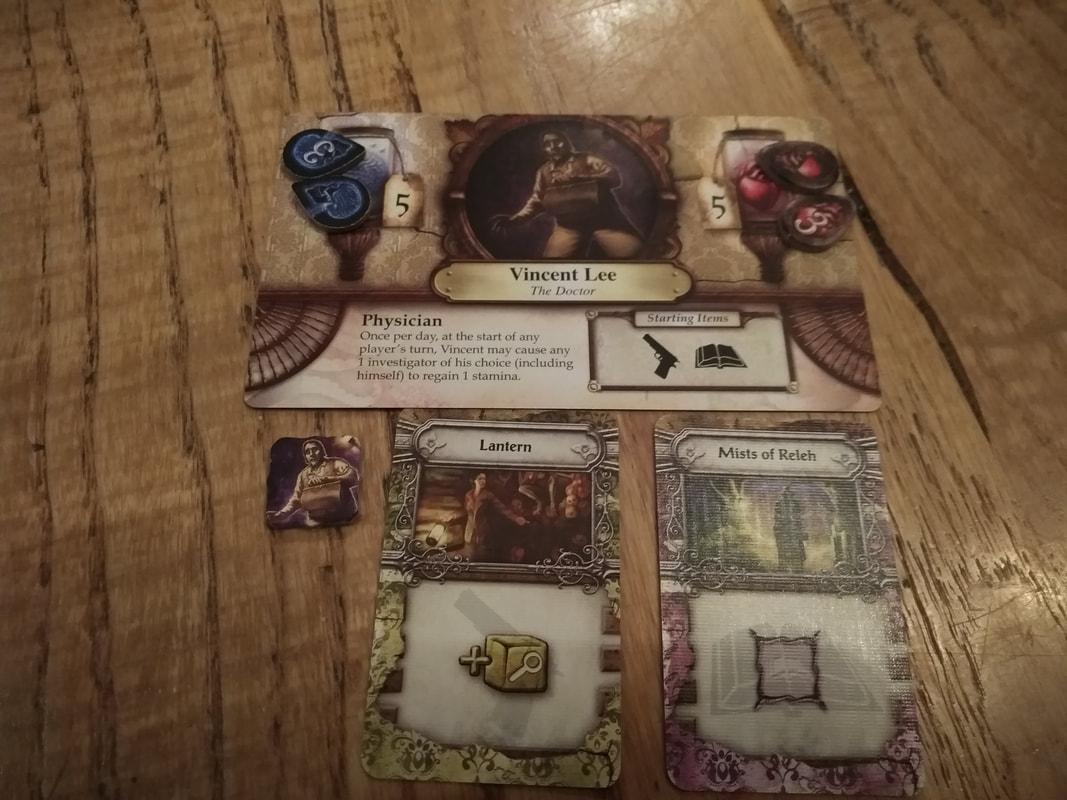
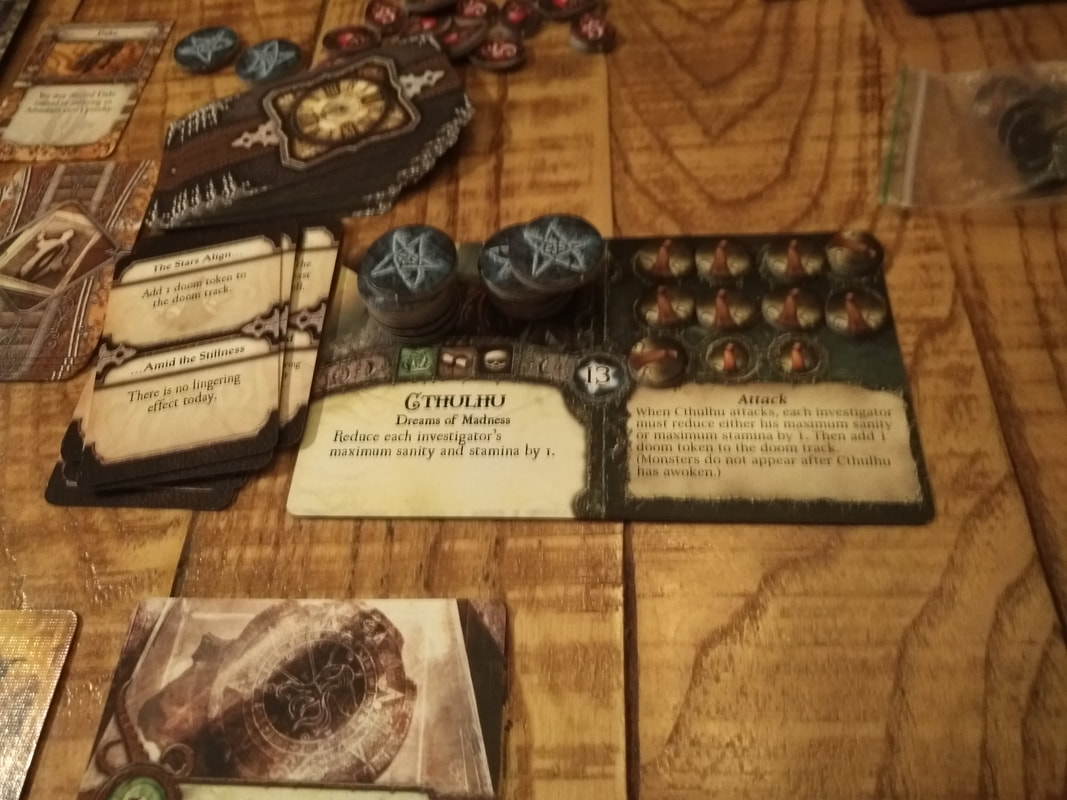
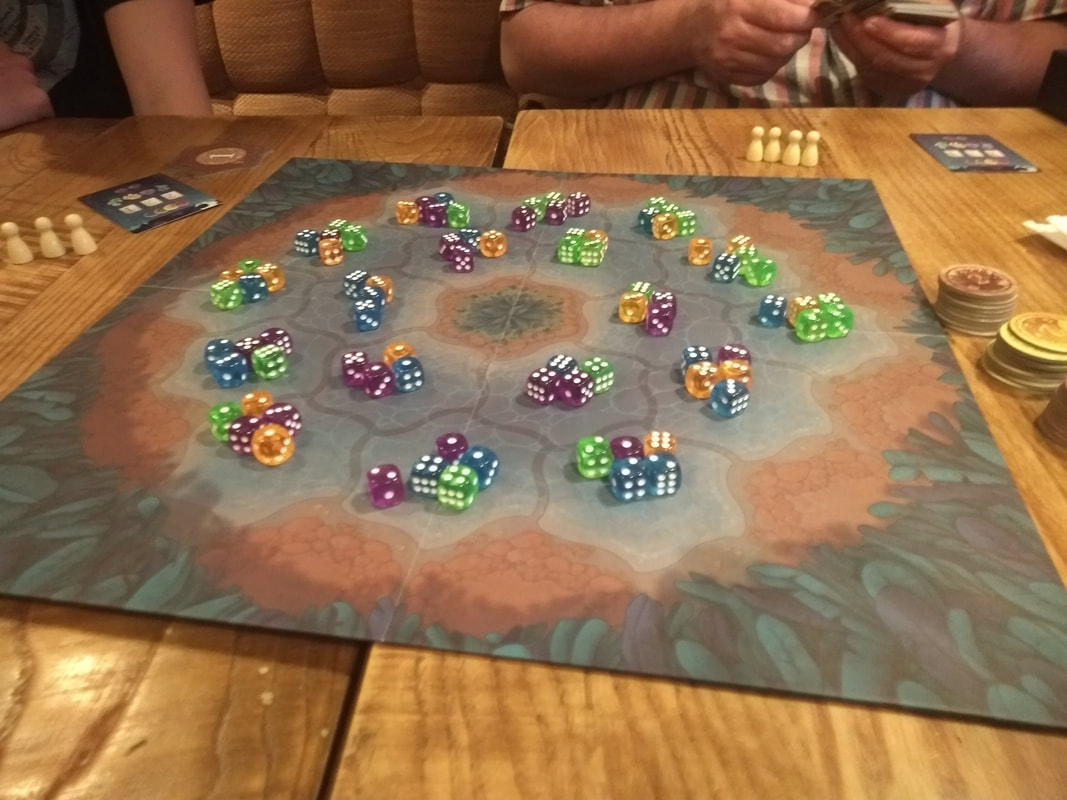
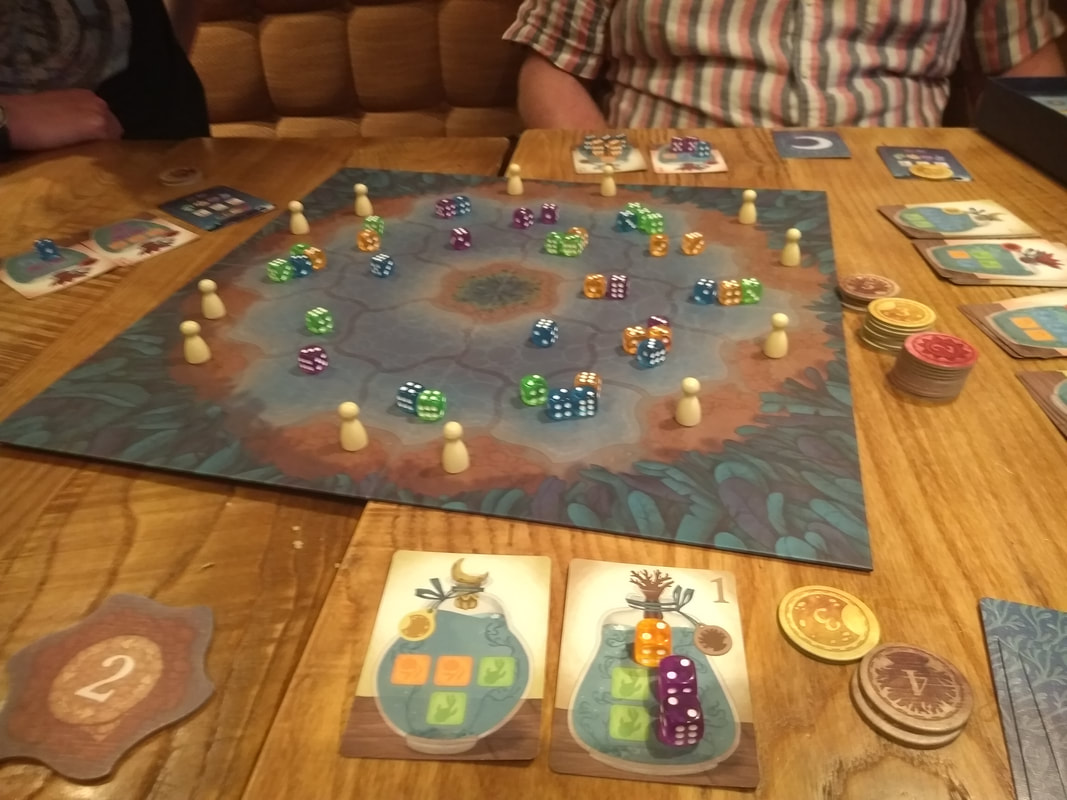
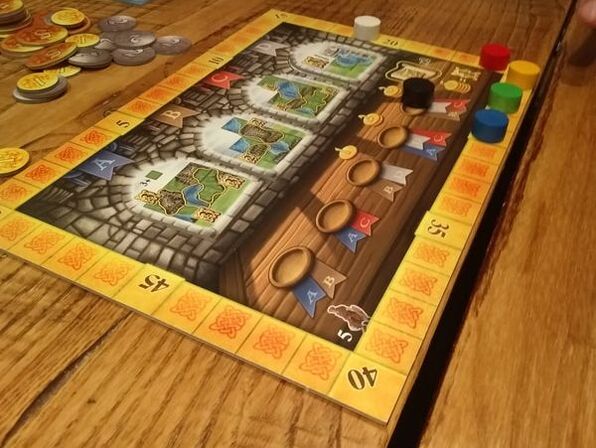
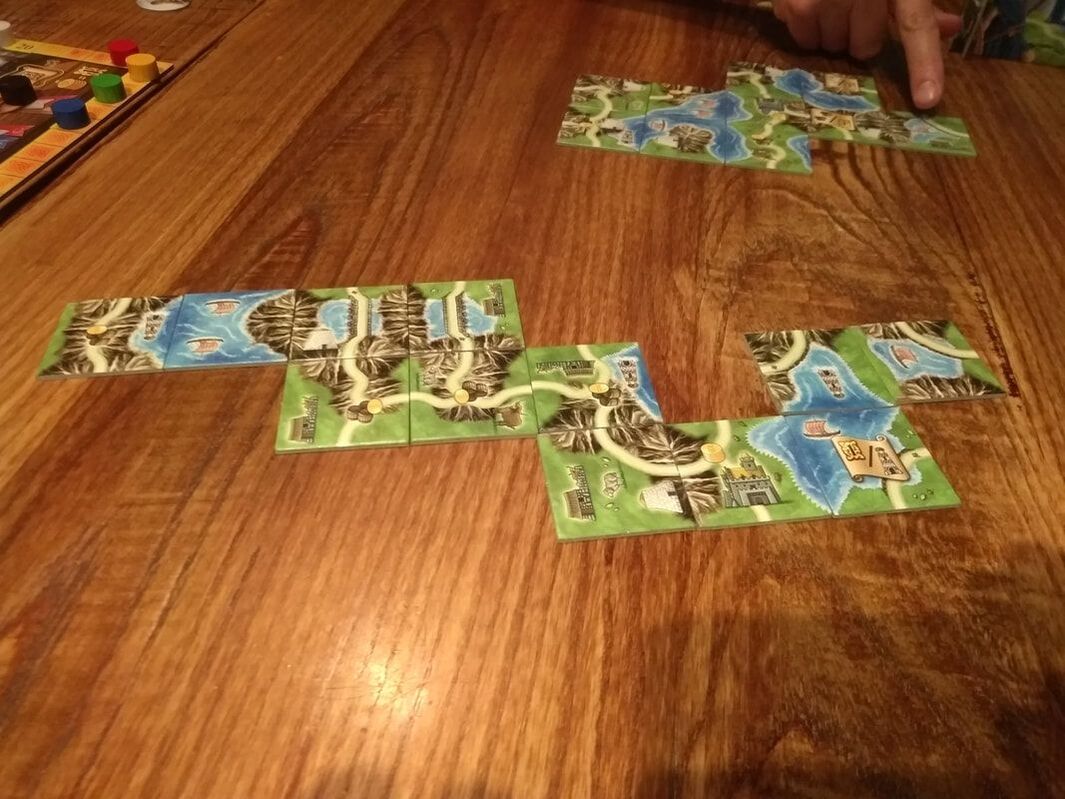
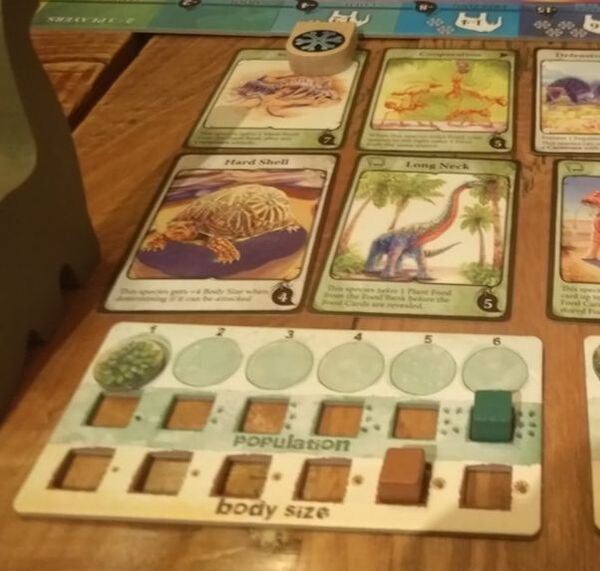
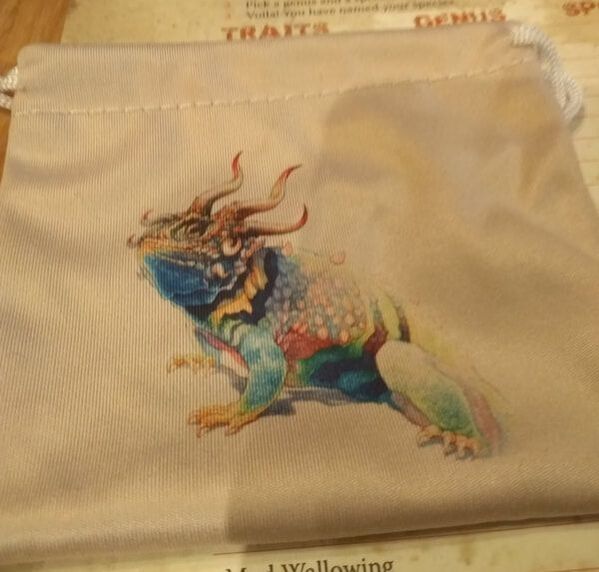
 RSS Feed
RSS Feed
